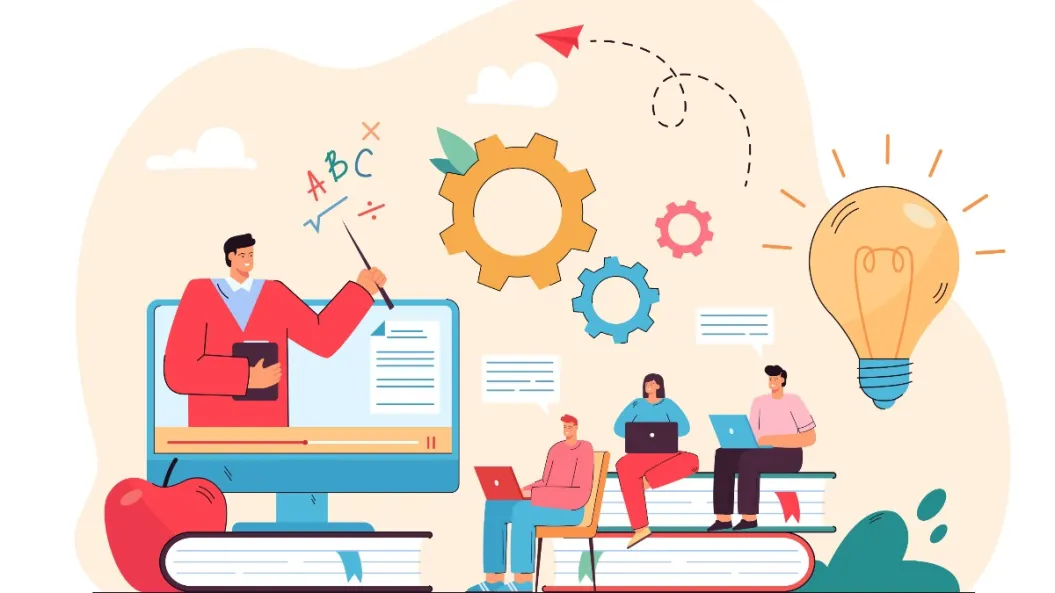Inquiry Form


In the dynamic landscape of education, technology has emerged as a transformative force, reshaping the way educators engage with students and deliver content. The integration of technology in the classroom is not just about incorporating gadgets; it's a strategic shift that empowers educators, enhances teaching methodologies, and prepares students for the challenges of the digital age. In this comprehensive exploration, we delve into the myriad ways technology streamlines teaching, making education more accessible, engaging, and effective.
Interactive whiteboards and smart displays replace traditional chalkboards, offering a dynamic platform for collaborative learning. Educators can illustrate concepts, showcase multimedia content, and engage students through interactive exercises, fostering a more participatory and visually stimulating learning environment.
Technology enables educators to transcend geographical barriers, conducting virtual classrooms and video conferences. This facilitates remote learning, guest lectures from experts around the world, and collaborative projects, providing students with a global perspective and educators with a versatile teaching platform.
Adaptive learning platforms leverage artificial intelligence to tailor educational content to individual student needs. These platforms analyze a student's learning patterns and progress, providing customized lessons and assessments to address their strengths and weaknesses, fostering a personalized learning experience.
Learning Management Systems streamline the organization and delivery of educational content. Educators can upload resources, create assignments, track student progress, and facilitate communication within a centralized platform. LMS enhances efficiency, allowing educators to focus more on teaching and less on administrative tasks.
Technology facilitates asynchronous communication through online discussion forums. Students can engage in thoughtful discussions, share perspectives, and collaborate on projects beyond the confines of the classroom. This not only enhances critical thinking skills but also promotes a sense of community among learners.
Real-time collaboration tools enable students to work together on projects, presentations, and documents in real-time. Educators can monitor group activities, provide feedback, and encourage teamwork, fostering essential collaborative skills that are valuable in the professional world.
Digital assessments and quizzes offer educators a streamlined way to evaluate student understanding. These tools often provide instant feedback, allowing educators to identify areas of improvement and adjust their teaching strategies accordingly.
Automated grading systems reduce the time educators spend on manual grading. This efficiency allows for more timely feedback, enabling students to address misconceptions promptly and facilitating a continuous feedback loop for improvement.
By generating immersive learning environments, VR and AR technologies make subjects come to life. These technologies give students a greater comprehension of difficult subjects through virtual field trips and simulations, which makes learning more interesting and memorable.
Gamification incorporates game elements into educational activities. This approach leverages the inherent motivation of games to increase student engagement, enhance retention, and make learning enjoyable. Educational games can cover a range of subjects, from mathematics to history, turning lessons into interactive experiences.
Technology facilitates ongoing professional development for educators through online courses and webinars. This allows them to stay updated on the latest teaching methodologies, technological advancements, and educational trends, ensuring they provide students with a relevant and forward-thinking education.
Platforms specifically designed for educators encourage collaboration and knowledge-sharing. Educators can exchange best practices, resources, and innovative teaching strategies, creating a supportive community that fosters continuous professional growth.
Educational analytics leverage data to assess and improve educational outcomes. By analyzing student performance, engagement levels, and learning patterns, educators can make informed decisions about their teaching strategies, identify areas for improvement, and tailor interventions to meet individual student needs.
Predictive analytics use historical data to anticipate future trends and outcomes. In education, this can help identify potential challenges students might face, enabling educators to intervene early and provide targeted support, ultimately enhancing student success rates.
While the benefits of technology in education are substantial, it's essential to acknowledge and address challenges:
Disparities in access to technology can create a digital divide, where some students have greater access to educational resources than others. Ensuring equitable access to technology is crucial for creating an inclusive learning environment.
Teachers may find it difficult to adjust to new technologies. In-depth training courses and continuous assistance are necessary to equip educators with the knowledge and self-assurance needed to successfully incorporate technology into their lesson plans.
The use of technology in education raises privacy and security concerns, particularly regarding student data. Implementing robust security measures and ensuring compliance with data protection regulations are imperative to safeguard sensitive information.
Striking a balance between traditional teaching methods and technology is crucial. Overreliance on technology may hinder the development of essential interpersonal and critical thinking skills. Technology should complement, not replace, effective teaching practices.
Technology's role in education extends beyond mere digitization; it represents a paradigm shift in the way we teach and learn. By empowering educators with versatile tools, creating personalized learning experiences, fostering collaboration, and leveraging data-driven insights, technology is reshaping education into a dynamic and inclusive ecosystem.
As we navigate the digital future of education, the key lies in thoughtful integration, addressing challenges, and staying attuned to the evolving needs of students. Technology, when harnessed effectively, not only streamlines teaching but also opens doors to limitless possibilities, preparing students for a world where adaptability and digital literacy are essential skills. As we embrace these advancements, the synergy between technology and education continues to shape a future where learning knows no bounds.